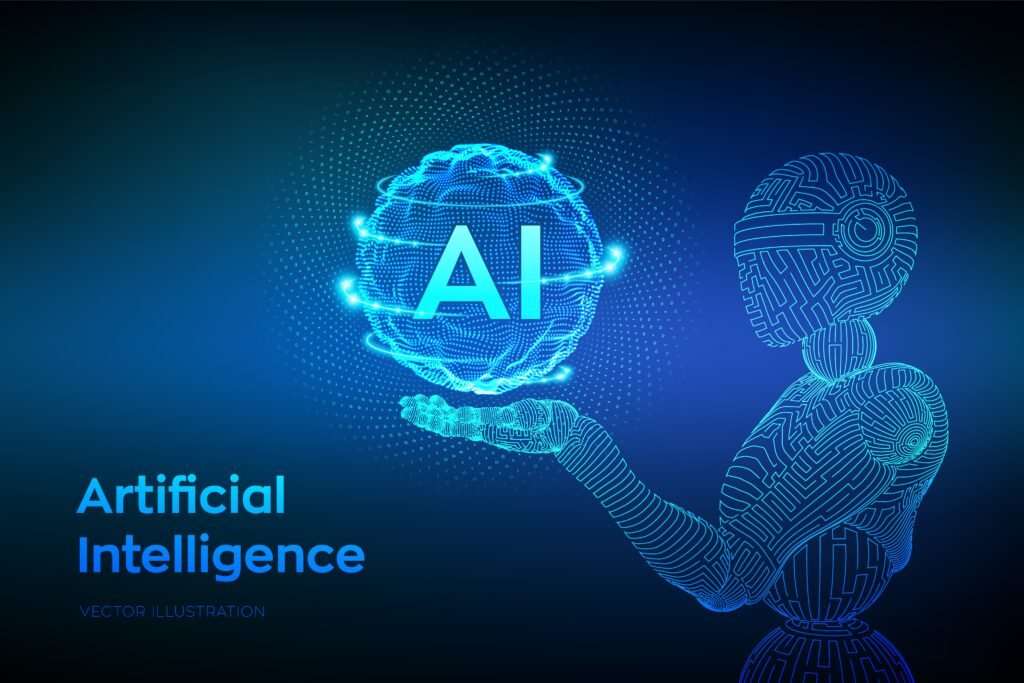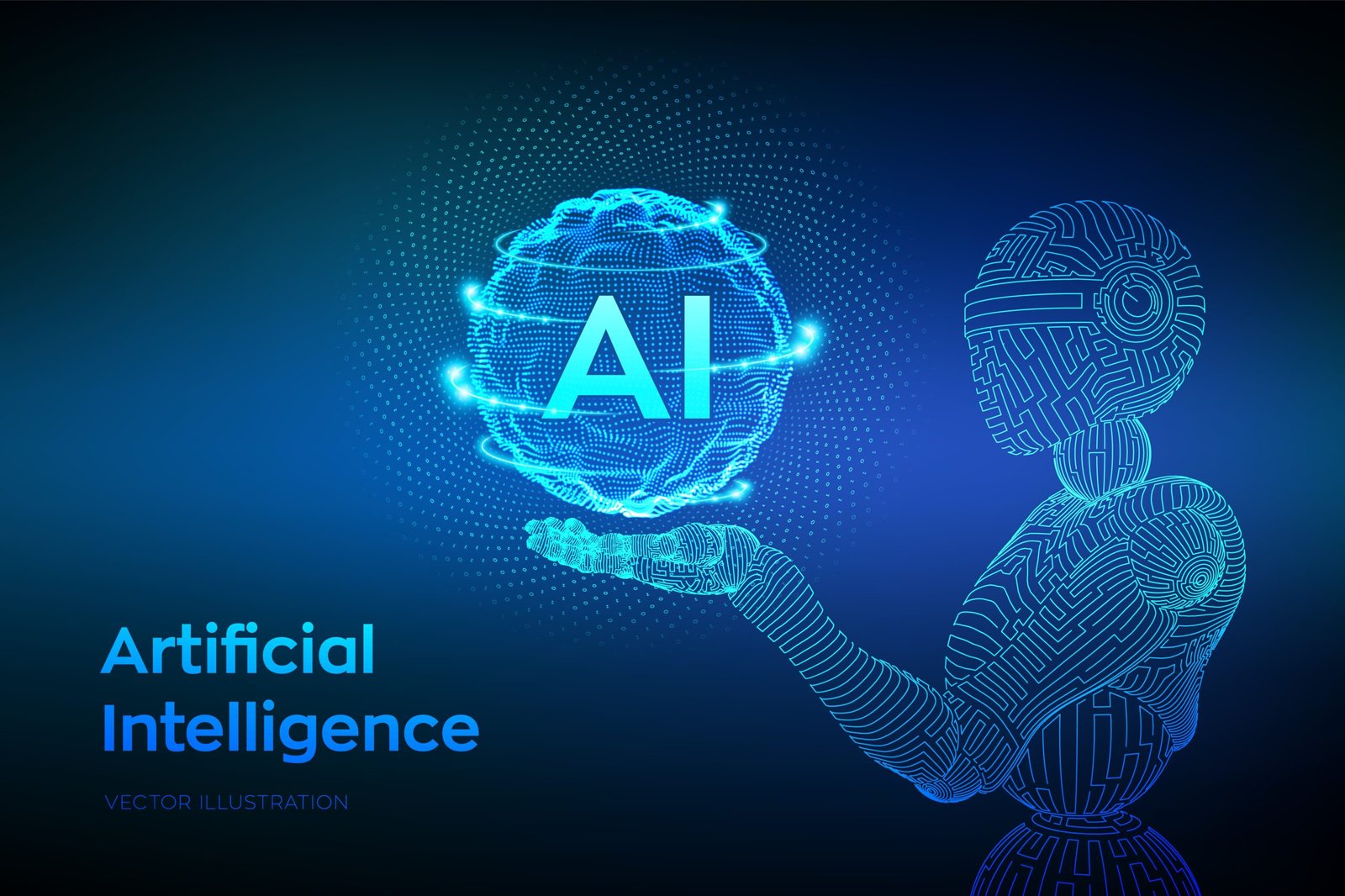In today’s rapidly evolving digital landscape, Artificial Intelligence (AI) is more than a buzzword it’s a transformative force shaping industries, technology, and our everyday lives. From AI-powered tools to generative AI models, AI is no longer a futuristic concept but a reality that impacts how businesses and societies operate. In this guide, we’ll explore the basics and cutting-edge developments in AI, answering key questions like what is AI, what is generative AI, and much more.

1. What is AI?
Artificial Intelligence (AI) refers to the development of computer systems that can perform tasks that typically require human intelligence. These tasks include problem-solving, decision-making, understanding natural language, and even recognizing patterns in data. AI is a broad field encompassing several subfields like machine learning, deep learning, and natural language processing (NLP).
In simple terms, AI mimics human intelligence by using algorithms and computational models to process large amounts of data, learn from it, and make decisions or predictions.
2. What is Artificial Intelligence in Computing?
In the realm of computing, artificial intelligence in computers means integrating algorithms and software to automate tasks such as:
- Image and speech recognition
- Natural language understanding
- Predictive analytics
- Machine learning
AI is now embedded in various technologies, from personal assistants like Siri and Alexa to sophisticated systems that manage complex datasets in businesses.
3. What is Generative AI?
Generative AI is a subset of artificial intelligence that focuses on generating new data based on existing datasets. This technology can produce text, images, audio, and even video content. Notable examples include DALL·E, which generates images from text prompts, and GPT (Generative Pre-trained Transformer), which creates human-like text.
Generative AI learns from vast amounts of data and then “creates” new, unique outputs that resemble the input data, making it invaluable for creative industries, content generation, and automated design processes.
4. What is AI Technology?
AI technology encompasses the tools, software, and systems powered by artificial intelligence. From predictive analytics to robotics, AI technology is transforming industries by automating tasks, enhancing decision-making, and improving efficiency. It leverages massive amounts of data to learn patterns and make accurate predictions, all while continuously improving through machine learning algorithms.
Key sectors where AI technology is driving innovation include healthcare, finance, retail, and manufacturing.
5. What is OpenAI?
OpenAI is a research organization dedicated to developing advanced artificial intelligence models while ensuring the safe and ethical deployment of these technologies. OpenAI is behind popular AI models like GPT-3 and DALL·E, which are leading examples of AI’s creative capabilities.
OpenAI’s mission is to ensure that the development of AI benefits all of humanity by advancing both technical capabilities and ethical guidelines.
6. What is Artificial General Intelligence (AGI)?
Artificial General Intelligence (AGI) refers to AI systems with the ability to understand, learn, and apply intelligence to a wide variety of tasks, much like a human. Unlike narrow AI, which is specialized for specific tasks (e.g., image recognition, language translation), AGI aims to replicate the flexibility of human intelligence.
Though AGI is still in the research phase, achieving AGI could revolutionize industries, enabling AI systems to perform tasks that require general cognitive skills.
7. What is Deep Machine Learning?
Deep machine learning refers to AI models that use multiple layers of artificial neural networks to process data in a hierarchical fashion. Each layer extracts specific features from the input data, allowing the model to learn complex patterns and representations.
Deep learning powers many advanced AI systems, including self-driving cars, facial recognition software, and generative AI tools like DALL·E. It is a crucial aspect of what makes AI so powerful in mimicking human decision-making.
8. What is DALL·E?
DALL·E is an AI model created by OpenAI that can generate unique images from text prompts. For example, if you ask DALL·E to generate an image of “a cat playing the piano in space,” it will create a visual representation based on that input. It uses generative AI techniques to create highly detailed and creative imagery, revolutionizing the field of digital art and design.
9. What is General AI vs. Narrow AI?
- Narrow AI: Refers to AI systems that are specialized for one task (e.g., facial recognition, language translation).
- General AI (AGI): Refers to AI systems that have the capability to perform any intellectual task that a human can do.
Currently, most AI technologies in use today are forms of narrow AI, while general AI remains a goal for future research.
10. What Defines AI?
AI is defined by its ability to simulate human intelligence through algorithms, learning systems, and data processing. The core elements that define AI include:
- Learning: AI models can improve performance over time by learning from data.
- Reasoning: AI systems can make decisions based on input data and predefined rules.
- Problem-Solving: AI is designed to solve specific tasks or complex problems.
- Perception: AI can interpret data from the environment (e.g., visual, audio) and act accordingly.
11. What is Artificial Learning?
Artificial learning, often used synonymously with machine learning, refers to the process through which AI systems learn from data to improve their performance on tasks. Instead of being explicitly programmed, AI models use machine learning algorithms to identify patterns and make decisions.
12. What About AI in the Future?
AI is still evolving rapidly, and its future promises even more profound transformations in our lives. The development of artificial general intelligence (AGI) and advancements in deep machine learning will push the boundaries of what AI can achieve. Moreover, ethical concerns surrounding data privacy, security, and bias will continue to shape the conversation around responsible AI development.
What Do You Know About AI?
Artificial intelligence is no longer a futuristic idea but a cornerstone of modern technology. From generative AI models like DALL·E to machine learning and deep learning algorithms powering everything from healthcare innovations to self-driving cars, AI is changing the world. As you explore AI, its applications, and its potential, understanding the basics of what is AI will help you appreciate how it’s shaping the future of technology.
This comprehensive guide uses key phrases to help answer common AI-related questions and offers a detailed introduction to the world of artificial intelligence. Would you like help with further expanding any of these sections?




